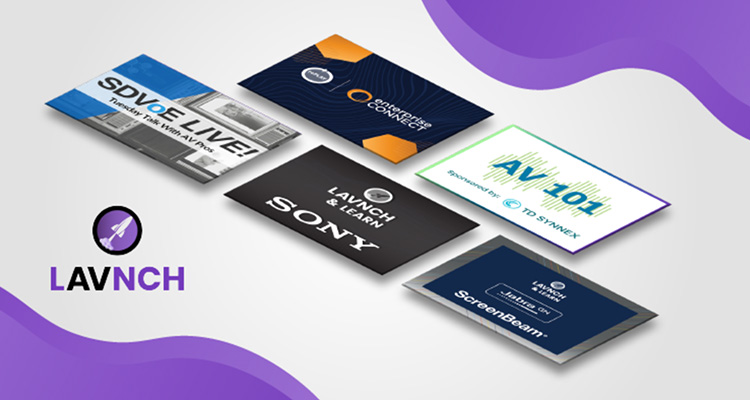AV 101: Digital Signage for the Industry Newbie

In the fall of 2020, as I waited in the single line at my California grocery store (making sure to keep the federally recommended 6 feet of distance), a display on a makeshift stand showed a single number indicating which checker was available to help me. The line was long. As I waited, I had time to wonder about the state of digital signage technology. There is so much more to get out of this technology than what I was seeing in this grocery store. I was seeing in real-time many businesses having to embrace digital signage in a way they hadn’t before.
Digital signage is not going away; in fact, it’s only going to become more important to ProAV. So for any new #AVtweeps joining our industry and are interested in learning more, this is for you. Retail is only one big user of digital signage. Corporate campuses, hospitality, education, finance, healthcare and restaurants are also finding they can’t do without this technology, particularly since this tech has been so paramount during COVID-19.
This would be a good time to nail down a definition of digital signage. Here’s mine: Digital signage is the technology system that allows the administrator to show various content to one or many (and potentially thousands of) screens, while managing the content centrally. This involves displays of many kinds, flat-screens and projectors, as well as their digital signage players. That’s a lot of hardware in a lot of locations. This is all controlled by a content management system (CMS).
And I’m just scratching the surface. To gain more context, I reached out to some experts to gain some insight into what is happening right now with digital signage.
I reached out to Stephen Stavar, who has been professionally involved in digital signage for 15 years. Employed by West Virginia University, he styles himself as its digital signage guru. As the one responsible for guiding and operating the system for a large university with multiple campuses, he had deep experience to share. He has to maintain the system and set it up for the future.
As we talked, I shared my definition of digital signage. Immediately he pointed out: “You forgot the content …The investment in the system is wasted if you don’t pay attention to the message.”
Content is the whole point of the system. The hardware is a medium for the message.
Aka, consider content creators first. Tech comes later.
Once the content creators — a diverse group from many sectors of the organization — have determined the message, people like Steve can make choices about the hardware and its placement. Important considerations include traffic patterns, visibility and ambient light. For Steve’s university, the hardware has to be hardened against tampering by curious and potentially destructive college students. When making choices, he was also able to choose some hardware that had a little holder for hand sanitizer. Since the signage was there, it could serve an additional health purpose.
To get another perspective, I also reached out to Alex Fortin. He is president at NovMega Digital Solution, a Canadian company specializing in the design and installation of audio-video systems for the hotel, restaurant and retail industry across North America. As a professional who designs systems for multiple customers’ uses, he has a broader perspective on the market. He wholeheartedly agrees that content is the focus, but takes it even further. He recommends creating a content strategy.
Content strategy must be created and determined prior to content creation.
You might know the saying, “content is king.” It rings true here as well — the digital signage system should have a plan. What is the content meant to accomplish? It needs a goal. And if there is a goal, what indicators can we track to know that goal is achieved? Yes, I’m talking about KPIs.
For Alex, if a customer is not ready to determine intent and doesn’t have a metric to determine success, there is only one thing to say: “You’re not ready to digital signage.”
This technology can incorporate and leverage a multitude of tools and engagement hooks for the audience it is designed to reach. Alex Fortin can set up a system to accomplish the goals of the message, and then track how well that goal is achieved.
One strong advantage of digital signage is it is so adaptable. If the content is not accomplishing the goal, it can be altered and disseminated very quickly. This great power requires its users to be responsible for knowing where to aim it. Again, digital signage is only going to increase in popularity and its success best served with planning and forethought. There are some incredible success stories of ways users have leveraged this technology, and some successes still to be achieved just around the corner. Be prepared to use strategy to maximize the utility.





